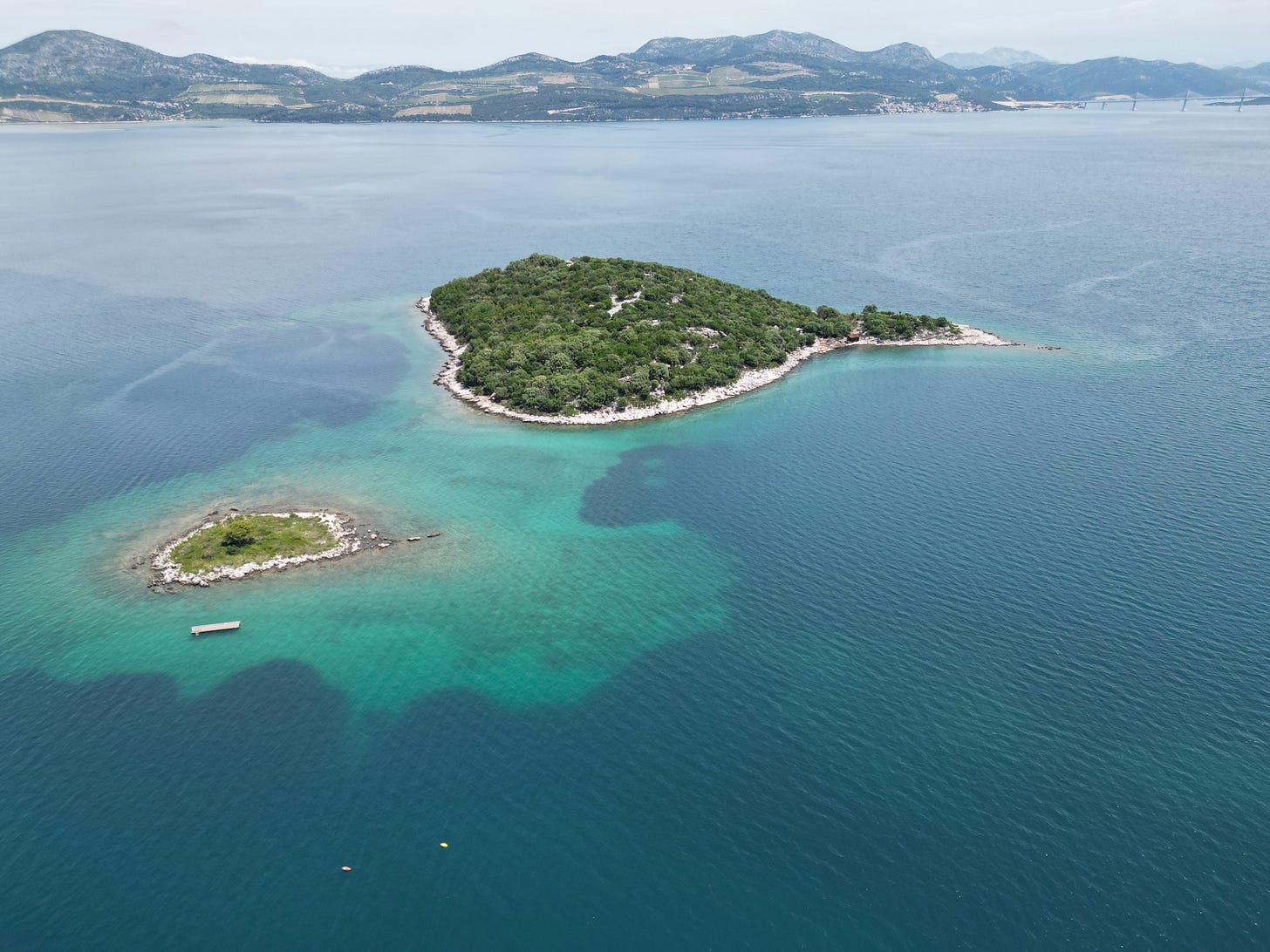Returning
Driving through a Greek village this week, I saw these birds nesting high atop a chimney.
I was astonished, as I’d only ever seen white storks in picture books as a child. I did know they migrated continents to return religiously to the exact same roof each year, and that got me thinking of the myriad of cases where leaders determined, strategically, to make a long journey back to ‘home base’.
A great example is my lifeline to humane and intelligent American news, The New York Times. Back in the 2010s, they wandered. Very far indeed: they launched lifestyle websites, event businesses, and various digital experiments while their newsroom budget shrank. By 2016, they were bleeding subscribers — and credibility.
But around 2020, they decided to ‘return to their rooftop’, by re-investing in their foundation: exceptional journalism. By 2024, their journalistic staff had grown from 36% to 46% of their total headcount of 6,000. They killed most side ventures, and invested heavily back into reporting from around the world, focussed relentlessly on what made them indispensable.
The storks understand something we (and NYT even) sometimes forget: there's profound strategic power in maintaining fidelity to what made you successful in the first place.
Question: What "rooftop" should your organisation return to this year?
When Power Builds Places
It wasn’t just birdlife and blue waters that beckoned me every day this week, but also a detour to the ruined city of Nicopolis.
Here, in 31BCE, the Roman Emperor Octavian crushed Antony and Cleopatra. As the power couple fled, he did more than just celebrate — he built a city. The scale was staggering: 150,000 people were forcibly relocated to create an instant metropolis. What struck me wasn't the impressive walls or theatre still standing, but Octavian's systematic brilliance. He knew winning once isn't enough.
He knew that sustainable power required reshaping the entire system.
Among his methods were to reward veterans with prime jobs and eliminate rival power centres. (NB: Without noting any modern-day parallels, recall that Antony and Cleopatra both committed ritual suicide). Octavian then went on and built Nicopolis as a permanent monument to his dominance, even hosting grandiose Aktion Games to rival the Olympics. It was urban planning as imperial strategy.
And, we can see this “place-shaping” everywhere today, even on less than monumental scale. Libraries evolve from book repositories to community hubs — shifting from knowledge hoarding to knowledge sharing. Masonic halls become art galleries, trading exclusivity for democratic access. Churches transform into concert venues and food banks, swapping spiritual authority for social care.
Today’s “place-shaping” goes even deeper, for good and ill. Disability access isn't just ramps — it's encoding who belongs in public spaces. Aged care facilities hidden in suburbs systematically remove older people from community life. Recently, I was working with a local government debating the location of their new services hub. The practical choice: cheap outlying land. The political choice: expensive main street real estate. They chose the latter, understanding what Octavian knew — that those who control geography shape destiny.
But of course the sobering reality is this: Nicopolis thrived 600 years before earthquakes and shifting trade routes made it obsolete. Even the most systematic exercises of power eventually become piles of rocks that tourists like me just wonder about.
Question: What "cities" are you building, and what happens when the context shifts beneath you?
Islands vs Archipelagos
I'm mesmerised by how Greek islands appear to float independently — each a distinct world with its own character. There's something profound about their apparent autonomy.
But here's what I learned this week: these islands share the same ancient tectonic foundation. Beneath the surface, they're one geological story. The same forces that created Odysseus's Ithaca also shaped the cliffs from which Sappho leaped. Their diversity springs from unity.
And, indeed, the best organisations operate as archipelagos, not islands.
Each “division” maintains distinct expertise while drawing from shared bedrock. Take a mental health organisation I'm working with: their front line therapists think in real-time human moments, finance obsesses over cost-per-intervention ratios, and their research unit lives in longitudinal outcome data trends. Completely different languages and rhythms.
But their tectonic plate? An unshakeable belief that everyone possesses psychological resourcefulness that can be tapped further. This shared foundation lets therapists inform research priorities, researchers validate finance models, and finance prove program impact to funders. Same departments, with multiplied influence.
Question: What foundational forces unite your organisation's different worlds in ways that could multiply everyone's impact?
Writing strategy newsletters from ancient Greece feels either perfectly appropriate or completely ridiculous. I'm going with the former until someone suggests otherwise.
Drop me a 'heart' and I'll be back in your inbox same time next week,
Andrew





Hi Andrew. Starting from the end of another great 5MSM, it’s wonderful that even from ancient Greece, you are thinking about strategy and your avid readers 😊. I wonder if the thread running through your vignettes is shared purpose aka the tectonic foundation, the one geological story, the shared bedrock, the roof top that is truly home. I can imagine the mental health organisation you write of having something in its purpose about the solid rock of psychological resourcefulness and the magnificence of the human mind. Which reminds me of something I haven’t thought about in ages – a self-photo-sentence school project my then 10 year old daughter did, holding up a key with her words: “When you unlock your mind, human ingenuity comes out.” Thank you for bringing this to mind with your words that are always so thought provoking.